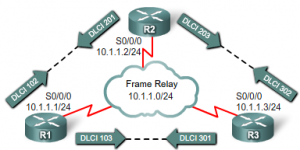The command turns on the OSPF routing protocol with a process id of 1. The network line must be added to tell the router which networks will be participating in OSPF. This command can be expanded to include stub areas and not so stubby areas. That is how Cisco refers to it. You can run multiple processes of OSPF using different process ids.
1 2 | router(config)# router ospf 1 router(config-router)# network 10.130.0.0 0.0.255.255 area 130 |
Debug OSPF:
1 2 | show ip ospf neighbor show ip ospf interface |





